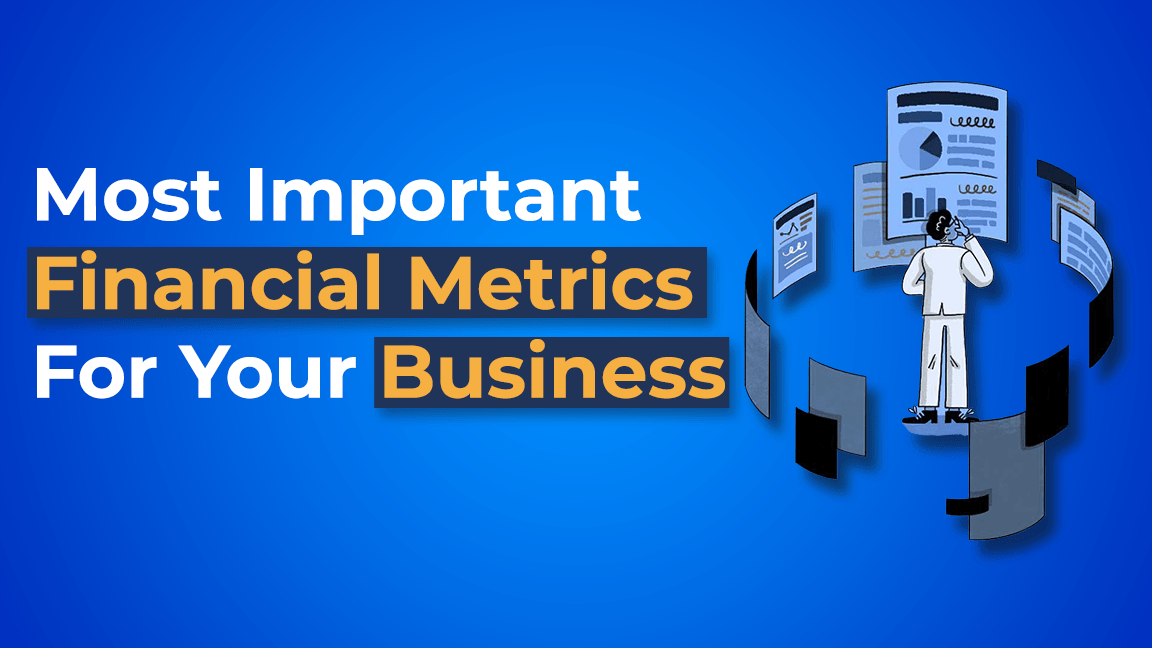Financial metrics in business are the cornerstone of every organization. The reason being one of the main objectives of a business is to generate a large pool of money to support employees’ lives as well as to make your business future-proof. However, a lot of SME owners tend to make mistakes even with the simple metrics of finance; they don’t even know what’s on their balance sheet. See it this way, If you don’t know the score, how can you know whether you’re winning or losing?
In this blog, we discuss the financial metrics without which you can’t grow your business and make you understand how you can utilize the data of these aspects to help your business flourish.
Financial Metrics And How To Utilize Them
Profit & Loss
A P&L statement is an indicator of the financial health of your company. The P&L statement is one of the three financial statements that every publicly traded company releases on a quarterly and annual basis. Due to the fact that it displays the amount of profit or loss a corporation makes, it is frequently the most well-known and frequent financial statement in a business plan.
To systemize your financial statements, take out P&L statements every month. Moreover, observe the pattern throughout the year and find out the factors which were the reasons behind any deflection in your statement. P&L make for one of the most important financial metrics.
Balance Sheet
An organisation’s assets, liabilities, and equity at the end of an accounting period are shown in a balance sheet. Owners, prospective investors, and lenders can assess the general financial health of a business using these three criteria:
Assets are what you own.
- Current assets – Assets that are easily converted to cash including bank accounts, debtors, stock etc.
- Fixed assets – Assets that have a longer life span and are not easily converted to cash like machinery and vehicles etc.
Liabilities are what you owe.
- liabilities – Debts due to be paid within 1 year, typically supplier invoices (known as creditors)
- Long-term liabilities – Debts to be paid over several years, e.g. bank loans
Equity is the outcome.
- Equity is the amount of money that a company’s owner has put into it or owns. On a company’s balance sheet, the difference between its liabilities and assets shows how much equity the company has.
Break-Even
The break-even threshold for Sales is reached when overall costs of operation and total gross profits are equal, leaving your small firm with no net benefit or loss. In other words, you’ve achieved this point in where the gross profit from your sales equals the cost of operations.
However, a lot of SME owners misunderstand the cycle of break-even; they think it is a one-time milestone in business, but that is not the case. In reality, you need to aim to achieve break-even every quarter or even monthly because it will give you a goal and process to reach your profit systematically.
Cashflow
The net amount of cash and cash equivalents coming into and going out of a business is referred to as cash flow. Money spent and money received reflect inflows and outflows, respectively.
A cash flow statement is a valuable measure of a company’s strength, profitability, and long-term future prospects. CFS helps determine whether a company has sufficient liquidity or cash to pay its expenses. Companies can use CFS to predict future cash flows. This helps with budgeting.
[ Also Read: Doing More with Less: The Importance of Leverage in Business]
Investments
One of the crucial things in business is analysing and perfecting your investments. A lot of SME owners do not understand the difference between investment and burning money. Let’s take an example of overheads; so many small businesses invest a large amount in utilities, although their profit doesn’t allow them to do so. The simple reason is that they think this is for the growth of the company, but one simple in business is don’t roar like a lion until you become one.
Conclusion
No matter how simple these financial metrics look but they are the core factors for any business in order to grow. Disabling them considering a formality and not keeping absolute track of it can deteriorate any business’s health. Hence, it is essential to work on these financial metrics and extract the data out of them to make your business flourish and make it future-proof.












